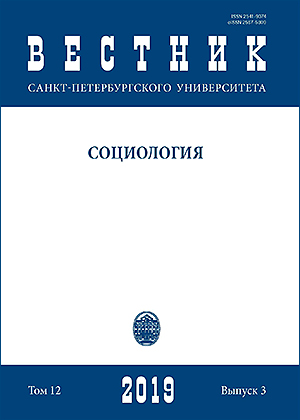Sociological model of life trajectories of women involved in prostitution
DOI:
https://doi.org/10.21638/spbu12.2019.303Abstract
The history of the study of prostitution is based on acceptance of one of the explanatory models — that prostitution is violence, deviation or economic choice. The author developed an applied sociological model of the life trajectories of women involved in prostitution, based on the results of her own theoretical and empirical research and the experience of social work with women involved in prostitution. This model is the result of the integration of the sociology of life course and the ecological model. The model consists of five consecutive stages: approximation, entry, adaptation, immersion, and exit. Development of the life trajectory in prostitution occurs in a social context that can be analyzed at four levels: micro-, meso-, exo- and macro-levels. The model is based on the idea of prostitution as a multifaceted phenomenon, and the premise that women involved in prostitution are a heterogeneous group. Within the framework of this model, prostitution is viewed in a dynamic aspect, as a process of an individual’s development in certain socio-ecological contexts, as a life trajectory, which is based on a combination of previous events and circumstances that formed the “path to prostitution”. The proposed sociological model provides a general structure and knowledge base for advancing the study of prostitution; it helps to identify white spots in the study of the phenomenon of prostitution and contributes to the hypotheses. The study discusses the applied value of the model for the development of effective measures of social control of prostitution, which should take into account the existence of different stages of life in prostitution.
Keywords:
prostitution, sexual exploitation, sex work, deviance, social control, prevention, life trajectories, ecological model
Downloads
References
References
Downloads
Published
How to Cite
Issue
Section
License
Articles of "Vestnik of Saint Petersburg University. Sociology" are open access distributed under the terms of the License Agreement with Saint Petersburg State University, which permits to the authors unrestricted distribution and self-archiving free of charge.




